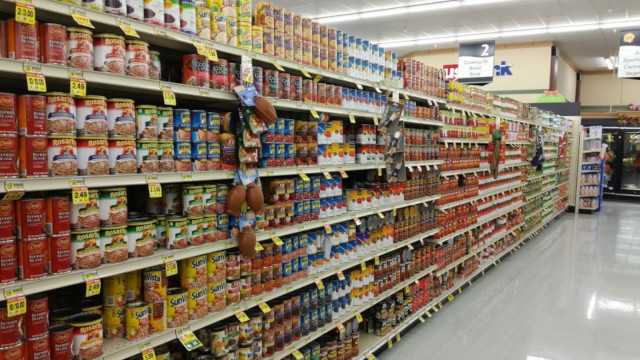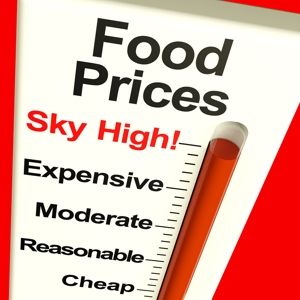The 2022 Food Price Trend report season is officially over. And the first of the annual 2023 predictions is in. The folks who’ve been reading the crystal balls say, the first half of 2023 will be challenging. We’re not out of the woods, yet…
 Better days: Back when food was available in relative abundance at what most of us
Better days: Back when food was available in relative abundance at what most of us
would call reasonable prices. The time, we’re told, will come again. But what
we’ll be eating then and when costs will come down remains to be seen…
Mystics, seers and gurus
And who are these mystics, seers and gurus? First and foremost among them in Canada is Dr. Sylvain Charlebois, director of the Agri-Foods Analytics Lab at Dalhousie University. He’s always the first one news types hit on for fresh food economy news and his Lab is famous for providing the most accurate and detailed analysis of the state of food prices and availability in Canada.
Used to bringing bad news
Asked for his views on food price trends, Charlebois warns, “We were hoping for better news for 2023, but unfortunately the first half of 2023 will be challenging. We’re not out of the woods yet.” That more or less confirms what he and other food sector analysts have been saying for most of this past year.
What’s that mean in dollars and dimes?
A Canadian family of four (two adults plus a teen boy and a tween girl) can expect to pay a total of $16,288 for food in 2023 — $1,065 more than it did in 2022, the 13th edition of Canada’s Food Price Report released yesterday (Monday) said. That represents a rise, year over year, of 5 – 7 percent, on top of the almost 11 percent food price explosion we’ve experienced in the past 12 months.
Virtually all the factors identified last year as contributing to food price increases last year will remain in play at least through next summer. Alas, many of those will also remain out of control of the average Canadian (or American, for that matte) grocery shopper for the foreseeable future.
Survival of the smartest
What can individual food shoppers do to help ease the burden? The Dalhousie Report spotlights some things we can all do in self defense, including:
- Turn to long-shelflife foods like dried pasta, beans, peas and lentils and pastas, and stock up when they go on sale.
- We’ve often pointed out that canned and jarred foods are packed at the peak of their freshness and abundance. Their prices and supply can be expected to remain more stable than those of fresh produce around the year.
- Same with fresh-frozen fruits and veggies. And, again, you shouldn’t worry about their wholesomeness and nutritional content.
- Meat presents a different challenge. But consumers can address the needs of their ‘meat tooth’ using one simple tactic: At my local grocery stores, there are regular department manager’s clearances of unsold meat cuts that are nearing their best-before dates. ‘Enjoy Tonight!’ the bright orange clearance labels shout from the meat cases. You can safely stock up (to a certain degree) on these meats without worry of spoilage or waste if you hustle them right home and stick them right in the bottom of the freezer, where it’s coldest. You’ll want to double wrap each cut to protect against freezer burn and other possible appearance damage or flavour loss during subsequent storage. Defrost and prepare one package at a time as needed.
Keep Calm And Carry On
Charlebois says Canadians – as we always do – will struggle on through the continuing food crisis and emerge on the other side stronger for it. Perhaps he’s hinting that we all need a reminder of how much worse things could be in an out-and-out Depression or another World War. Neverthess, the Report does point out that food price inflation is currently at its highest in the past 40 years and will go higher.
“To say that it’s been a challenging year for Canadians at the grocery store would be an understatement,” he insists. But he’s confident that,“consumers will continue to get smarter about grocery shopping as they navigate through this [continuing] so-called food inflation storm.”
~ Maggie J.

